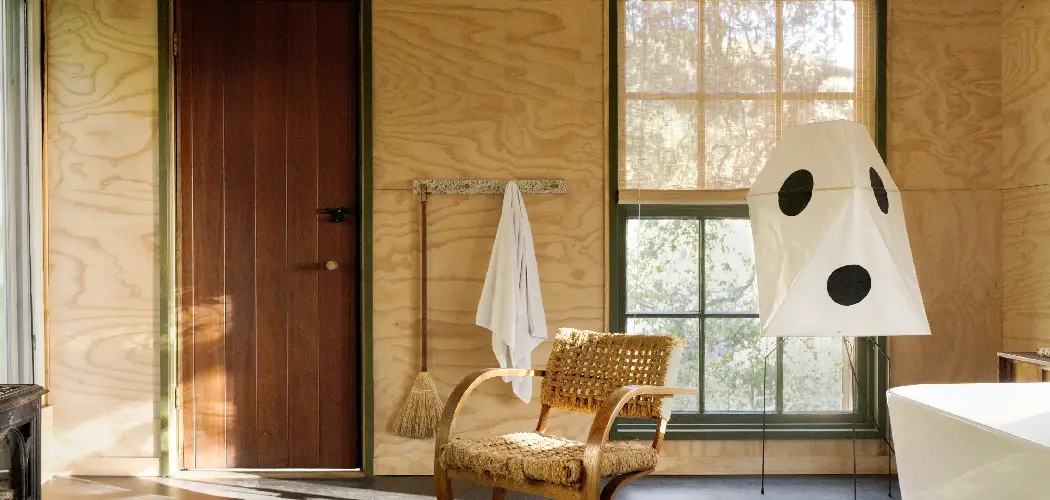Plywood has been widely used as an interior wall finish in many homes thanks to its versatility and affordability. It can be painted, stained, or covered with fabric to give your home a unique and contemporary look. However, finishing plywood walls can be daunting, especially if you are a DIY novice. In this blog post, we will guide you through the steps on how to finish a plywood wall and give your interior décor a facelift.
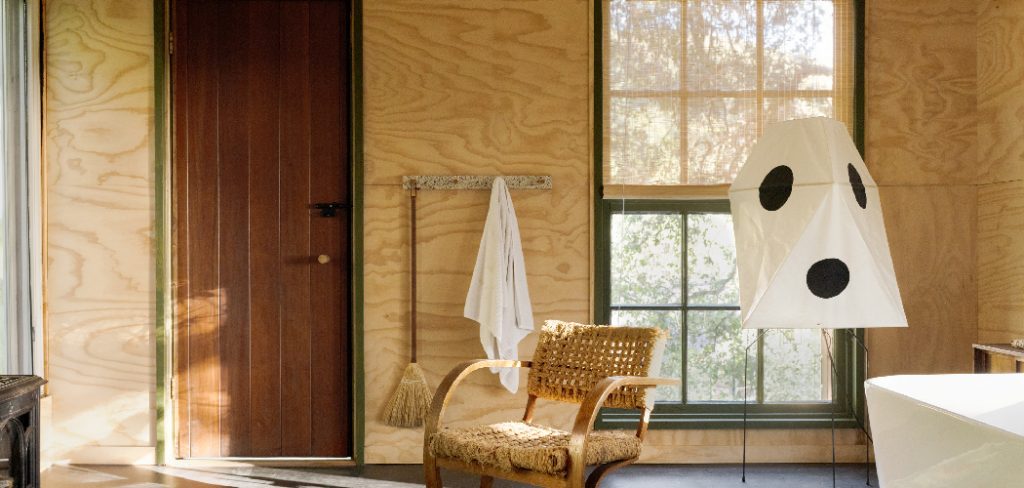
Can You Finish a Plywood Wall?
Plywood is a fantastic material to work with, especially when creating accent walls. It’s versatile, affordable, and has a natural look that can easily tie a room together. But can you finish a plywood wall?
The answer is a resounding yes! With the right tools and techniques, you can achieve a polished, high-end look that will impress everyone who enters your home. Whether you want a simple, clear coat or a bold paint color, finishing a plywood wall is a DIY project within reach. So what are you waiting for? Grab your sandpaper, and let’s get to work!
Why Should You Finish a Plywood Wall?
Plywood has always been a popular material for walls and other structures. However, simply installing it and leaving it unfinished can leave it dull and incomplete. Finishing a plywood wall not only adds a level of sophistication and warmth to a space but also helps protect the wood from damage and wear.
Plus, with various finishing options, you can easily find a style that fits your taste and elevates your home’s aesthetic. Investing the time and effort to finish your plywood wall is a simple and cost-effective way to add value and beauty to your living space.
A Guide on How to Finish a Plywood Wall
1. Preparing the Plywood Wall
The first step towards finishing a plywood wall is to prepare it. You must clean the wall, remove any protruding nails or screws, and level the surface to avoid imperfections. Sand down any rough patches, and ensure the wall is smooth and debris-free before you proceed to the next step.
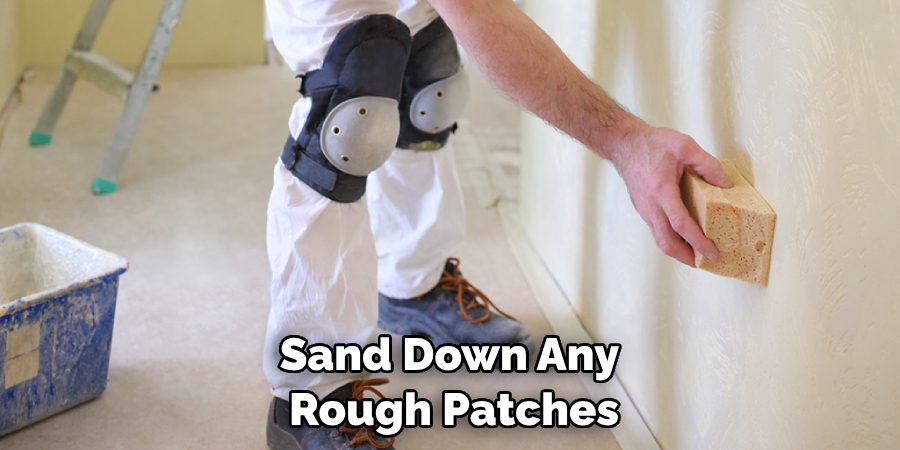
2. Priming the Plywood Wall
After preparing the plywood wall, it’s crucial to prime it. Priming helps seal off the wood grain, ensuring the paint adheres evenly to the surface. Use a good quality primer, and apply it in one or two coats, following the manufacturer’s instructions. Allow the primer to dry completely before proceeding to the next step.
3. Painting the Plywood Wall
Once the primer has dried, you can paint the plywood wall. Choose a high-quality paint that can withstand wear and tear. Apply the paint in thin coats using a roller or brush. Avoid overloading the paintbrush since this results in drips that can ruin your wall’s finish. Apply several thin coats, letting each coat dry completely before applying the next one.
4. Staining the Plywood Wall
If you prefer the plywood grain’s natural look, you can stain the plywood wall instead of painting it. Staining gives the plywood wall a warm and inviting look and can be accomplished through several methods. You can use commercial or DIY stains using organic materials such as coffee grounds, tea, or vinegar. Following the manufacturer’s instructions, apply the stain in thin coats, and let it dry completely.
5. Covering with Fabric
Another way to finish a plywood wall is by covering it with fabric. This method is inexpensive, stylish and allows you to personalize your interior décor. Choose a fabric that matches your style and taste, and ensure it’s of high quality. You can use fabric glue or staples to attach the fabric to the wall and ensure it’s taut and free of wrinkles.
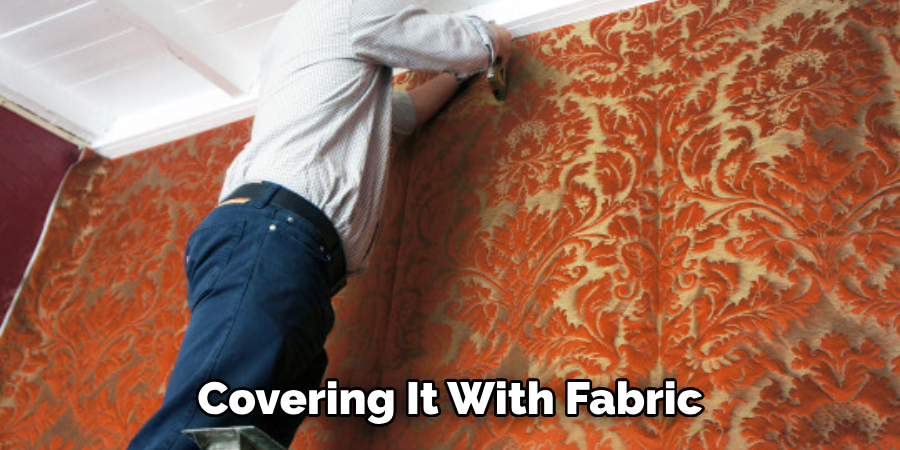
6. Adding Trim and Molding
Adding trim and molding to your plywood wall can help to define the walls, making them look more elegant. You have a variety of options when it comes to trims, such as traditional wood moldings, decorative metal accents, and much more. Measure the area carefully before cutting the trim or molding pieces, and use a nail gun to attach them securely.
7. Finishing Touches
Once you have finished the wall, it’s time to add the finishing touches. You can choose to decorate your walls with art pieces and photographs and add mirrors for a unique look. You may also consider installing sconces and light fixtures for an even more dramatic effect.
Finishing a plywood wall can be intimidating, especially for DIY beginners. However, by following these steps and tips, you can transform your interiors into stylish and timeless. So go ahead and get started on your project today!
5 Considerations Things When You Need to Finish a Plywood Wall
1. Choose the Right Plywood
When finishing a plywood wall, the first step is to choose the right type of plywood. Different types of plywood are made from different materials and have different levels of durability. For example, hardwood plywood is more durable than softwood plywood but is also more expensive. You should also consider the thickness of the plywood when selecting a type for your project.
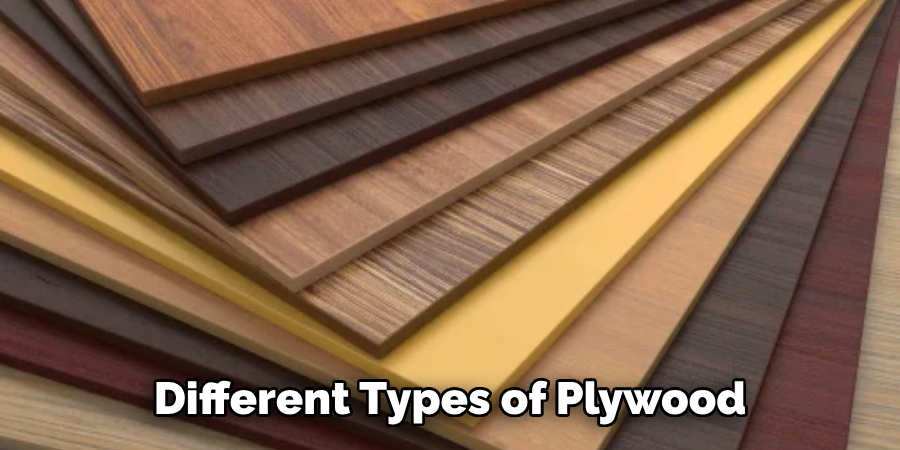
2. Prepare the Wall Surface
Before you start to finish your plywood wall, it is important to ensure the surface is properly prepared. This includes cleaning off any dust or debris that may be present on the wall and sanding down any rough edges that could interfere with the finishing process. Additionally, you should ensure that any holes or cracks in the wall are filled in with spackle or wood filler before applying paint or stain.
3. Select Your Finishing Materials
Once you have chosen your type of plywood and prepared the wall surface, it’s time to select your finishing materials. Depending on what look you want for your wall, you may opt for paint, stain, varnish, or some combination of these products. Check product labels for instructions on how many coats are recommended for each material and how long they need to dry between coats.
4. Apply Finishes Evenly
When applying finishes to your plywood wall, it’s important to make sure that they are applied evenly so that there aren’t any inconsistencies in color or texture across different sections of the wall. To do this, use a brush or roller and apply even strokes across the entire surface of the wall until all areas are covered with an even finish coat. Allow enough time between coats to dry completely before adding additional layers.
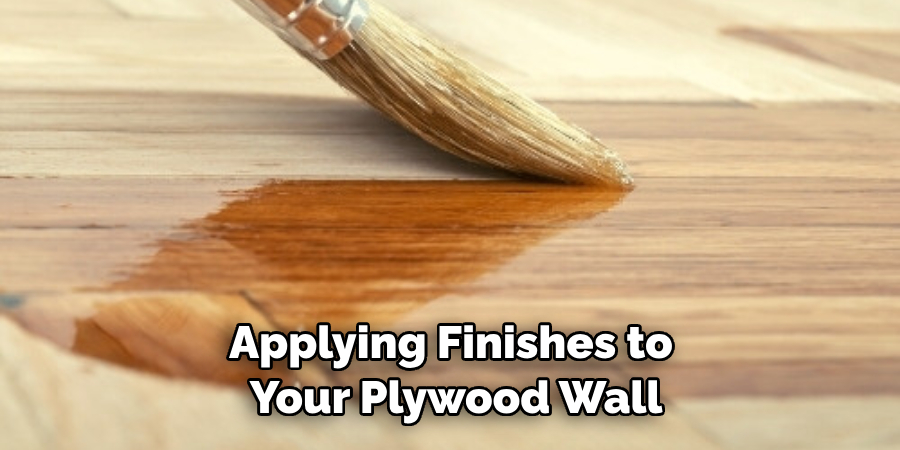
5. Protect Your Finished Wall
Once you have finished applying all coats of paint or stain to your wall, it’s important to protect it from damage by using sealants such as polyurethane or lacquer sealer over top of the finish layer(s). This will help keep moisture out and ensure your finished walls look great for years! Additionally, it would be best if you considered adding a coat of wax or furniture polish to the finished surface to give it an extra layer of protection and shine.
5 Benefits of Finishing a Plywood Wall
1. Durability
A plywood wall is a great option for those looking for a durable wall covering. Plywood comprises layers of thin sheets of wood glued together, making it much stronger than traditional wood boards. The strength and durability of plywood make it ideal for walls that will be exposed to the elements or may need to bear heavy loads. Additionally, plywood walls are resistant to water damage and can last many years with proper maintenance.
2. Easy Installation
Plywood walls are also relatively easy to install compared to other wall coverings. Plywood panels come in standard sizes, making them easy to cut and fit into most spaces. Installing a plywood wall requires no special tools or skills, so anyone can do it with basic DIY knowledge.
3. Cost-Effective
Plywood walls are also a cost-effective option compared to other wall coverings such as drywall or plasterboard. Plywood is much cheaper than these materials, meaning you can get more bang for your buck when installing a plywood wall in your home or office space.
4. Versatile
Plywood walls are also very versatile and can be used in many ways. They can be painted, stained, or even covered with wallpaper or fabric for added texture and visual appeal. Additionally, they can easily be customized with molding and trim pieces if desired.
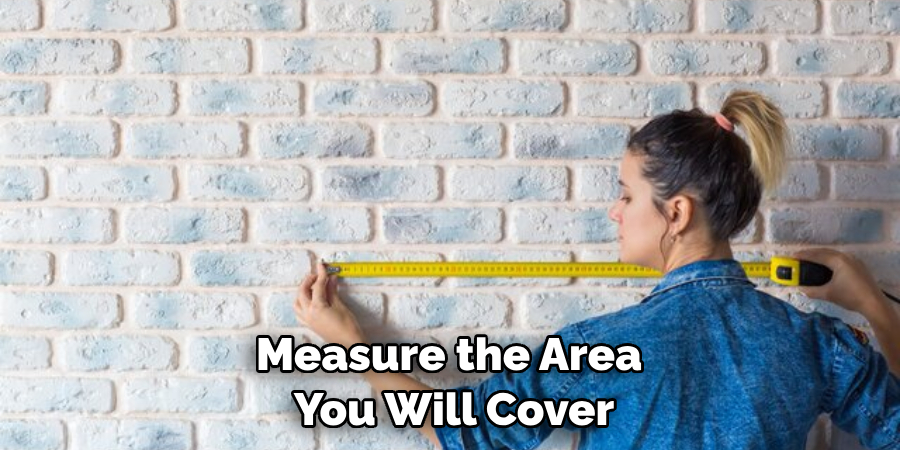
5. Eco-Friendly
Finally, plywood walls are an eco-friendly option as they are made from renewable resources such as trees and recycled wood chips which help reduce our environmental impact by reducing deforestation and waste production. Additionally, they can be recycled at the end of their life cycle if desired. This makes them ideal for creating a more sustainable home or workspace.
6 Common Mistakes People Make When Trying to Finish a Plywood Wall
1. Not Measuring Properly
One of the most common mistakes people make when trying to finish a plywood wall is not measuring properly. Before you begin, it is important to measure the area you will cover and ensure that you have enough plywood to cover the entire wall. If you do not measure properly, you may have gaps in your wall or an uneven finish.
2. Not Sanding Smoothly
Another mistake people often make is not sanding smoothly. Plywood walls need to be sanded down before they can be painted or stained, and it is important to ensure that all surfaces are smooth and even before applying any paint or stain. If there are any bumps or ridges, they will be very noticeable once the paint or stain has been applied.
3. Not Using Enough Nails
When installing a plywood wall, it is important to use enough nails to keep the panels in place. If too few nails are used, the panels may start to sag over time due to gravity, which can cause them to warp and become uneven. Ensure you use at least three nails for every panel when installing your wall.
4. Not Applying Primer
Before painting or staining a plywood wall, it is important to apply a primer coat first. This will help ensure that the paint or stain adheres better and lasts longer on the surface of the wood. Without a primer coat, your paint or stain may start peeling off after just a few months of exposure to moisture and sunlight.
5. Not Sealing Edges Properly
It is also important to seal all edges of your plywood wall with caulk before painting or staining it. This will help prevent moisture from getting into the edges of your panels and causing them to warp over time due to water damage. Ensure all edges are sealed properly before applying any paint or stain for best results.
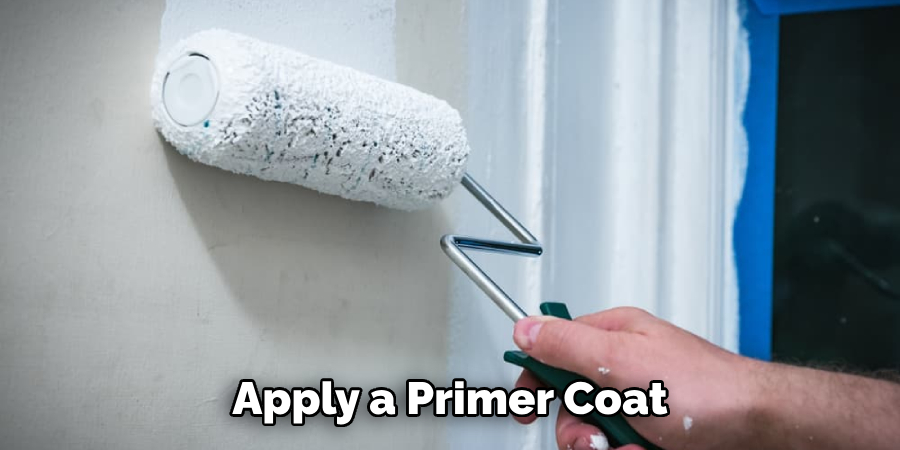
6. Not Letting Paint Dry Completely
Finally, many people make the mistake of not letting their paint dry completely before attempting to hang anything on their plywood walls, such as pictures or shelves. It is important to give your paint at least 24 hours after application before hanging anything on it so it has time to dry completely and adhere properly without any issues.
Overall, finishing a plywood wall can be a great way to spruce up the look of any room in your home or office space. By following these tips and avoiding common mistakes, you can ensure your finished wall looks great for years!
Conclusion
Finishing a plywood wall can be an easy and enjoyable DIY task with the right tools, techniques, and materials. Whether you paint, stain, or cover the plywood wall with fabric, the final result will be a stunning and welcoming interior décor that reflects your personality and style.
Remember to take your time, prepare the surface well, use high-quality materials, and follow the manufacturer’s instructions to achieve the best results. Enjoy the process, and have fun! Thanks for reading our post about how to finish a plywood wall.

